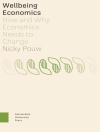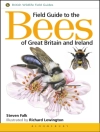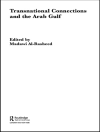‘Eisenberg′s book is refreshing, in addition to its theoretical merits, for the presence of a distinctive human voice, unafraid to express passion, anger and hope. Readers will benefit enormously from the substance of his book, but also from its form.’
—HUMAN RELATIONS
In Strategic Ambiguities: Essays on Communication, Organization, and Identity, Eric M. Eisenberg, an internationally recognized leader in the theory and practice of organizational communication, collects and reflects upon more than two decades of his writing. Strategic Ambiguities is a provocative journey through the development of a new aesthetics of communication that rejects fundamentalisms and embraces a contingent, life-affirming worldview.
Strategic Ambiguities:
- Explores the role of language and communication in the construction of social structures and personal identities.
- Provides a useful intellectual and historical context for students through framing chapters and head notes developed especially for this volume.
- Chronicles the historical development of an important argument about communicating and organizing through the sustained focus on a single theorist.
Intended Audience:
This text is designed for advanced undergraduate and graduate courses such as Organizational Communication, Communication Theory, and Organizational Behavior in the fields of Communication, Business & Management, and Educational Leadership.
‘This collection of essays is insightful, thought-provoking, and forward-looking. Eric Eisenberg takes on challenging positions, writes in a cogent and accessible manner, and always stimulates new scholarship. This work will be an important teaching tool, not just for the innovative content of the writing, but also for the historical narrative of organizational communication embedded in it.’ —Steve May, University of North Carolina at Chapel Hill
‘Lay audiences will find the text rich with evocative narratives even as the theoretical moves will engage students and teacher-scholars. This edited compilation is likely to serve as a springboard for future inquiry and an invaluable resource for teaching and learning in undergraduate and graduate communication courses.’ —THE REVIEW OF COMMUNICATION
Tabla de materias
Introduction: Laying Down a Path in Walking
PART I. EMBRACING AMBIGUITY
1. Ambiguity as Strategy in Organizational Communication
2. Meaning and Interpretation in Organizations
3. Conflict at Disneyland: A Root-Metaphor Analysis
4. Reconsidering Openness in Organizational Communication – Eric M. Eisenberg and Marsha G. Witten
PART II. TRANSCENDENCE AND TRANSFORMATION
5. Jamming: Transcendence Through Organizing
6. Miscommunication in Organizations – Eric M. Eisenberg and Steven R. Phillips
7. Dialogue as Democratic Discourse
8. A Communication Perspective on Interorganizational Cooperation and Inner-City Education
9. From Anxiety to Possibility: Poems 1987-1997
10. Openness and Decision Making in the Search for a University Provost
11.Transforming Organizations Through Communication – Eric M. Eisenberg, Linda Andrews, Alexandra Murphy, and Linda Laine-Timmerman
12. Flirting With Meaning
PART III. A NEW COMMUNICATION AESTHETIC
13. The Kindness of Strangers: Hospitality in Organizational Communication Scholarship
14. Building a Mystery: Communication and the Development of Identity
15. Creating Clearings for Communication
16. Karl Weick and the Aesthetics of Contingency
Conclusion
Sobre el autor
Eric M. Eisenberg (Ph.D. & M.A., Michigan State University; B.A., Rutgers University) is co-author of the best-selling introductory organizational communication textbook (Eisenberg/Goodall, Organizational Communication: Balancing Creativity and Restraint, 4/e, Bedford/St. Martin’s ©2005) and is considered one of the top organizational communication scholars and researchers in the field. A recipient of numerous grants and academic and teaching awards, Eisenberg also serves as associate editor to the following journals: Communication Monographs; Communication Research; Management Communication Quarterly; Journal of Applied Communication Research.












